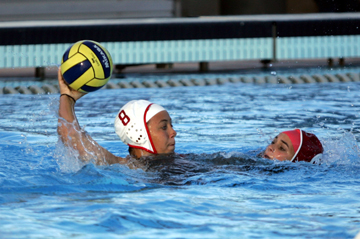
Coined the ‘San Benito Toss,’ figure-8 roping is about as
traditional as the Saddle Horse Show and Rodeo itself
About 40 years ago, San Benito County resident Mark Skow picked
up the roping art of figure-8 by simply watching the other skilled
ropers of his day.
Coined the ‘San Benito Toss,’ figure-8 roping is about as traditional as the Saddle Horse Show and Rodeo itself
About 40 years ago, San Benito County resident Mark Skow picked up the roping art of figure-8 by simply watching the other skilled ropers of his day.
It was perhaps a blessing in disguise.
The verbal description of figure-8 roping can make it sound like an impossible feat — a see-it-to-believe-it act on horseback, team roping without the team, a header and heeler sitting atop a single saddle.
Cowboys and ranch hands often refer to it as an “art,” and in action, the roping motion is smooth and graceful, almost as if the cowboy or cowgirl who tosses it is twisting it around the steer with their mind.
Often used while alone on the ranch, the figure-8 can immobilize an animal safely with a single throw of a double loop; the top loop wraps around the neck of the steer and then twists around toward the front to form a bottom loop for the animal to step into.
The slack is removed, and the steer is left immobile for doctoring, branding or special handling.
“It takes a little bit of a soft rope with a lot of action to it,” Skow said. “There is a lot of technique to it.”
And it’s a technique that is now being passed down to the younger generations. Skow taught his three sons the roping maneuver, stressing the importance of timing and angles and speed.
“And I hate to say it,” Skow said, “but there is a lot of luck in it, too.”
Of course, if figure-8 roping sounds easy, chances are you were born in San Benito County.
“The loop itself, it’s easy on the cattle,” said Larry Sonniksen, who will compete this weekend in the elimination round at the San Benito County Saddle Horse Show and Rodeo, which is one of just a few ranch-style rodeos in the country that offers figure-8 roping as a competitive event.
“It’s not the easiest thing in the world,” Sonniksen added, “but it’s not that hard, either.”
Certainly a trusty trade of practice, figure-8 dates back to the Californio vaquero, and ties into the tradition of San Benito County and its Spanish heritage.
Entertainer and cowboy Will Rogers, who frequented San Benito County in the 1930s, called figure-8 roping the “San Benito Toss.” He often visited the Quien Sabe Ranch following performances at the California Rodeo in Salinas, but may have had difficulty perfecting the local roping trade.
Said local roper Lola Galli of Rogers, “… He was always spinning a rope like he did on stage. One thing he could never do, though, was make a Figure 8.”
Since around the mid-70s, Skow can recall, figure-8 has been held as a competition at the Saddle Horse Show and Rodeo. But before then it was only an exhibition.
“It’s very regional, although there are more competitions now,” said Jim Prewett, who’s attended figure-8 competitions at ranch-style rodeos down south, as well as one in Pleasanton. “But San Benito County, I believe, was the first.”
Like Skow, Prewett picked up the roping trade as a teenager while watching Bill Caldera, whose father was the arena director at Bolado Park for many years.
“We were just a bunch of kids,” Prewett said. “We all tried to emulate that and get it done.”
Prewett now manages a cattle ranch, and often uses a figure-8 while in the field — good practice for the Horse Show and Rodeo’s competition.
The ranch hand scored a perfect 33 points during last weekend’s preliminary round at Bolado Park, roping three steer for 11 points apiece.
“I don’t think that I’ve ever done that,” Prewett said.
Last weekend, some 48 contestants were narrowed to a top 10 for this weekend’s elimination round, as Prewett, Sonniksen, Scott Spencer, Justin Fields, Pat Regan, Pat Abercrombie, Richie Coefield, Jerad Renz, Adam Renz and Dean Bell all made the cut and will all try their hand with a money prize on the line.
“This year’s competition was one of the tougher ones,” said Skow, who missed the cut but has competed 12 times in figure-8 and made the elimination round eight times. “I think the quality of ropers is getting better.”
Chances are that will happen as the locals-only rodeo continues to offer the event.
“It’s not a common thing for most areas,” Sonniksen said. “But it’s unique to this area because of one thing — the vaquero tradition.
“It’s traditional, just like the Saddle Horse Show is traditional.”







